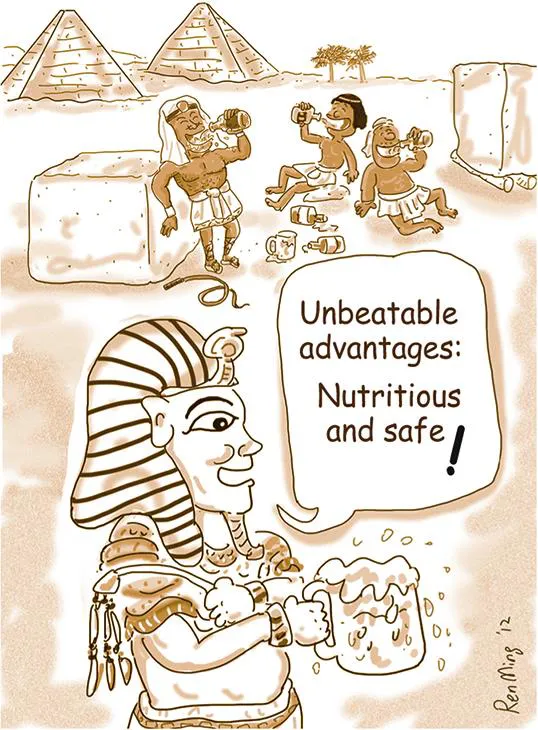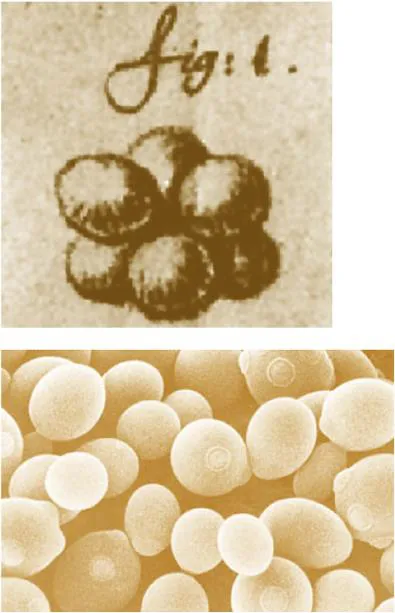
- 464 pages
- English
- ePUB (mobile friendly)
- Available on iOS & Android
eBook - ePub
Biotechnology for Beginners
About this book
Biotechnology for Beginners, Second Edition, presents the latest information and developments from the field of biotechnology—the applied science of using living organisms and their by-products for commercial development—which has grown and evolved to such an extent over the past few years that increasing numbers of professionals work in areas that are directly impacted by the science. For the first time, this book offers an exciting and colorful overview of biotechnology for professionals and students in a wide array of the life sciences, including genetics, immunology, biochemistry, agronomy, and animal science.
This book also appeals to the lay reader without a scientific background who is interested in an entertaining and informative introduction to the key aspects of biotechnology. Authors Renneberg and Demain discuss the opportunities and risks of individual technologies and provide historical data in easy-to-reference boxes, highlighting key topics. The book covers all major aspects of the field, from food biotechnology to enzymes, genetic engineering, viruses, antibodies, and vaccines, to environmental biotechnology, transgenic animals, analytical biotechnology, and the human genome. This stimulating book is the most user-friendly source for a comprehensive overview of this complex field.
- Provides accessible content to the lay reader who does not have an extensive scientific background
- Includes all facets of biotechnology applications
- Covers articles from the most respected scientists, including Alan Guttmacher, Carl Djerassi, Frances S. Ligler, Jared Diamond, Susan Greenfield, and more
- Contains a summary, annotated references, links to useful web sites, and appealing review questions at the end of each chapter
- Presents more than 600 color figures and over 100 illustrations
- Written in an enthusiastic and engaging style unlike other existing theoretical and dry-style biotechnology books
Frequently asked questions
Yes, you can cancel anytime from the Subscription tab in your account settings on the Perlego website. Your subscription will stay active until the end of your current billing period. Learn how to cancel your subscription.
No, books cannot be downloaded as external files, such as PDFs, for use outside of Perlego. However, you can download books within the Perlego app for offline reading on mobile or tablet. Learn more here.
Perlego offers two plans: Essential and Complete
- Essential is ideal for learners and professionals who enjoy exploring a wide range of subjects. Access the Essential Library with 800,000+ trusted titles and best-sellers across business, personal growth, and the humanities. Includes unlimited reading time and Standard Read Aloud voice.
- Complete: Perfect for advanced learners and researchers needing full, unrestricted access. Unlock 1.4M+ books across hundreds of subjects, including academic and specialized titles. The Complete Plan also includes advanced features like Premium Read Aloud and Research Assistant.
We are an online textbook subscription service, where you can get access to an entire online library for less than the price of a single book per month. With over 1 million books across 1000+ topics, we’ve got you covered! Learn more here.
Look out for the read-aloud symbol on your next book to see if you can listen to it. The read-aloud tool reads text aloud for you, highlighting the text as it is being read. You can pause it, speed it up and slow it down. Learn more here.
Yes! You can use the Perlego app on both iOS or Android devices to read anytime, anywhere — even offline. Perfect for commutes or when you’re on the go.
Please note we cannot support devices running on iOS 13 and Android 7 or earlier. Learn more about using the app.
Please note we cannot support devices running on iOS 13 and Android 7 or earlier. Learn more about using the app.
Yes, you can access Biotechnology for Beginners by Reinhard Renneberg,Vanya Loroch in PDF and/or ePUB format, as well as other popular books in Biological Sciences & Biotechnology. We have over one million books available in our catalogue for you to explore.
Information
Chapter 1
Beer, Bread, and Cheese
The Tasty Side of Biotechnology
Abstract
Biotechnology sounds like something new, less than a 100 years old. It isn’t, it is probably as old as agriculture, dating back to at least 8000 BC. And it all started with fermentation, a set of chemical reactions carried out by microorganisms to break down glucose to obtain usable energy. Chief among these microorganisms are yeasts that can transform glucose into ethanol in the absence of oxygen, a process called glycolysis, or into carbon dioxide in the presence of oxygen, a process called respiration. These two different lifestyles have made yeast an indispensable companion of every culture or civilization producing bread or alcoholic beverages. But yeasts tell only part of the long story of biotechnology: much smaller microorganisms, bacteria, have also been helping humans transform, enhance and preserve foods. Cheese, tea, coffee, and many other popular foods are all fermentation products. Biotechnology started by being delicious.
Keywords
Fermentation; brewing; alcohol; ethanol; beer; bread; cheese; yeast; bacteria; enzymes; glycolysis; respiration
WHAT WOULD YOU LIKE TO DO BETTER
IF YOU COULD START ALL OVER AGAIN?
THAT’S EASY TO ANSWER.
I WOULD TAKE TEACHING
AT LEAST AS SERIOUSLY AS RESEARCH.
TEACHING IN MY VIEW
IS NOT JUST THE PRESENTATION OF FACTS,
BUT PASSING ON MY EXPERIENCE AS A SCIENTIST
AND MY PERSONAL VIEWS ABOUT SCIENCE,
THE WORLD AND US HUMANS.
THE WEAPON OF SCIENCE
IS ITS APPETITE FOR KNOWLEDGE,
BUT IT IS A BLUNT WEAPON
IF USED WITHOUT A SHARP INTELLECT,
AND EVEN THE SHARPEST INTELLECT
LACKS VIGOR WITHOUT PASSION AND COURAGE.
THESE, IN TURN, ARE SHORT-LIVED
IF NOT SUSTAINED BY THE POWER OF PATIENCE.





1.1 In the Beginning, There Was Beer and Wine—Nurturing Civilization
The first beer we know of was brewed by the Sumerians who lived in Mesopotamia between the rivers Euphrates and Tigris (modern-day Iraq), in 8,000–6,000 BC. They produced a nutritious, nonperishable, and intoxicating beverage by soaking barley or Emmer wheat (an ancient wheat cultivar grown in the region) in water and letting it germinate. The process of husking wheat around 3,000 BC is shown on a Sumerian clay tablet, known as Monument bleu, in the Louvre museum in Paris. The germinated grain was then kneaded into beer bread, which was only lightly baked and then crumbled and stirred into water. The mixture was later poured through a wicker sieve and kept in sealed clay vessels. Soon, gas bubbles began to rise as fermentation set in.
Fermentation is an anaerobic process which transforms the sweet juices into an alcoholic drink—in this case, beer.
Part of the germinated grain was dried in the sun—a process equivalent to modern kiln-drying—to preserve it for periods when fresh grain was in short supply. The beer brewed later by the Babylonians in the same region had a slightly sour taste, due to lactic acid fermentation taking place simultaneously. Lactic acid fermentation helped greatly to prolong the storage life of beer, as many microbes cannot survive in an acidic environment. This was immensely important in the hot climate of the Middle East where hygienically safe beverages were at a premium.
Alcohol is fermented sugar, a final metabolite of yeast. Even an alcohol content of 2–3% affects the permeability of the cytoplasmic membrane in bacteria and inhibits their growth. In the hot climate of the Middle East, slowing down the growth of microbes through fermentation is a definite—perhaps even decisive—advantage. The development of agriculture brought about a dramatic rise in population, and with it a dearth of clean drinking water. It is a problem that the Western world had also been struggling with right to the end of the 19th century, and which many other parts of the world are still facing. Think of the familiar images of the river Ganges where animal and human carcasses and feces pollute the drinking water. Contaminated water can be highly dangerous, whereas fermented products such as beer, wine, or vinegar were virtually germ-free. They could even be used to make slightly contaminated water safe, as not only alcohol, but also organic acids in the fermented products inhibit the growth of potential pathogens.
The thirst of our ancestors was quenched by beer, wine, or vinegar rather than water. The oldest biotechnology in the world provided safe and stimulating drinks that nurtured civilization. Such revolutionary technology was bound to succeed.
Not only the people of Mesopotamia, but also the ancient Egyptians were beer brewers. A mural dating from around 2400 BC. shows the production process.
The Egyptians were already aware that using the sediment from a successful batch would speed up the new fermentation process. Their beers tended to be dark, as they used roasted beer bread, and they reached an alcohol content of 12–15% (Figs. 1.1 and 1.2). Bottled beer was also an Egyptian invention. When the pyramids were built, beer in clay bottles was delivered to the building si...
Table of contents
- Cover image
- Title page
- Table of Contents
- Copyright
- Quotes
- Letter From the Editor
- Contributors
- Boxes
- Foreword by the US Editor, Arnold Demain
- A Personal Foreword by Tom Rapoport
- Preface
- Some Personal Comments About Our US Editor, Prof. Arnold Demain
- Chapter 1. Beer, Bread, and Cheese: The Tasty Side of Biotechnology
- Chapter 2. Enzymes: Molecular Supercatalysts for Use at Home and in Industry
- Chapter 3. The Wonders of Gene Technology
- Chapter 4. White Biotechnology: Cells as Synthetic Factories
- Chapter 5. Viruses, Antibodies, and Vaccines
- Chapter 6. Environmental Biotechnology: From One-Way Streets to Traffic Circles
- Chapter 7. Green Biotechnology
- Chapter 8. Embryos, Clones, and Transgenic Animals
- Chapter 9. Myocardial Infarction, Cancer, and Stem Cells: Biotechnology is a Life Saver
- Chapter 10. Analytical Biotechnology and the Human Genome
- Glossary
- Credits
- Name Index
- Subject Index